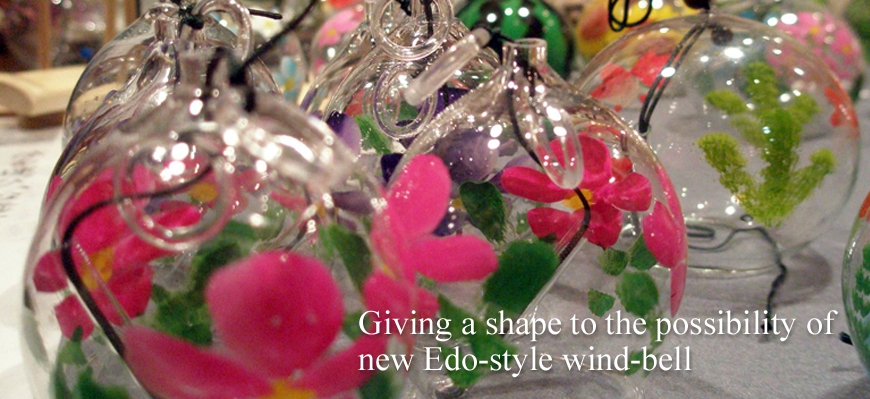
Masayoshi Shinohara
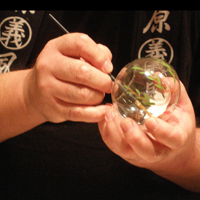
Detailed pictures are drawn on the internal surface, so fine crafts-manship is required.
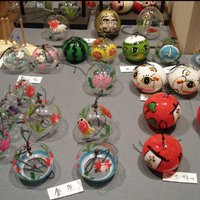
In addition to traditional designs, there are many original pieces.
What is an Edo-style wind-bell?
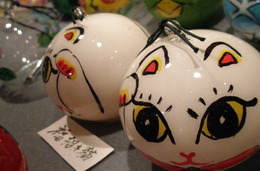
The reason Shinohara continues to make Edo-style wind-bells
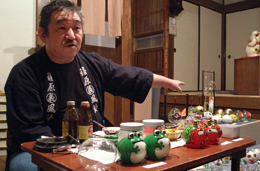
How did Shinohara become an Edo-style wind-bell maker?
Have you thought of becoming a wind-bell maker from an early age?
No. I was reluctant to help my parents to do the job when I was a child. When I was a junior high school student, I really did not like to do so. But from the time when I was a high school student, I began to think that I had to help my family to some extent. Because when I came back home and saw my parents, they worked until 8 or 9 p. m., and until midnight in summer.
What made you decide to leave the company and became an Edo-style wind-bell maker?
I have helped my parents since my junior high school days. But I thought both my brother and I did not need to take over the job, so I became employed. However, they lived in the same house, and they still worked when I came back home. They worked without stopping until midnight. I thought many things before starting this job. I felt that I did not need to help the company when my family was too busy working, so I left the company.
What do you think about a craftsman's job?
I have liked craftsmen because they often came to my house, and I saw my parents working hard. I have thought that, even if I do not take this job, I would be a craftsman eventually. So I feel comfortable with being a craftsman. Conversely, I wanted to be a craftsman.
Shinohara's works
How many wind-bells do you make a year?
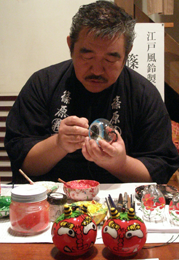
How many variations of designs are there?
There are infinite variations because I can draw anything. When I have enough time, I make what I am asked to make.
Why have you made many original products?
I went abroad to show my works at a Japan fair. That experience made me to make original works. Overseas, it is not the custom to display wind-bells outside, but place them indoors. A story I heard from a tatami maker at the same Japan fair also prompted me to make original works. He said that people overseas bought just 1 meter of tatami's border part, and wrapped it around their waist or wore it in their hair. It seems that they wonder why Japanese use such a beautiful item only for tatami. After hearing that story, I thought that, if there are good wares, it is better to use them differently without sticking to the tradition, so I made pierced earrings and straps.
Do you have any other new ideas?
Most wind-bells have been bought by older people. Young people have hardly bought them. So I made new wind-bells, such as a lily-shaped wind-bell that I thought was small, cheap and cute. I have also made desktop wind-bells that can be placed indoors because nowadays there are not so many houses that have eaves.
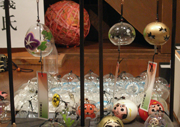
What does an an Edo-style wind-bell maker mean to Shinohara?
What does this job mean to you?
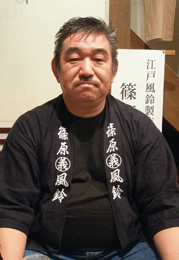

Masayoshi Shinohara

Detailed pictures are drawn on the internal surface, so fine crafts-manship is required.

In addition to traditional designs, there are many original pieces.
What is an Edo-style wind-bell?

Shinohara's grandfather taught Yoshiharu, a father of Shinohara, how to make glass wind-bells. The wind-bells have been made since the Edo Period, so the wind-bells are called "Edo-style wind-bell." Now, only two shops, "Shinohara Furin Honpo" and "Shinohara Maruyoshi Furin" have been making Edo-style wind-bells. Wind-bells have their roots in China. It is said that they evolved from a tool hung from bamboo, which was used for telling a fortune by wind directions and its jingle.
The reason Shinohara continues to make Edo-style wind-bells

I think it is the same as other jobs. If I saw my family working late into the night everyday, I would do any kind of work. I chose this job by chance. But as I do this job, I like it more and more. Honestly, I thought that I could make a living by other jobs even after turning 25 or 30 years old, so I began doing this job to just help my family. But when I was about 25 years old, I thought about the job calmly. When I saw the situation, there was no workshop that made Edo-style wind-bells. So I was aware that I should definitely do this job.






